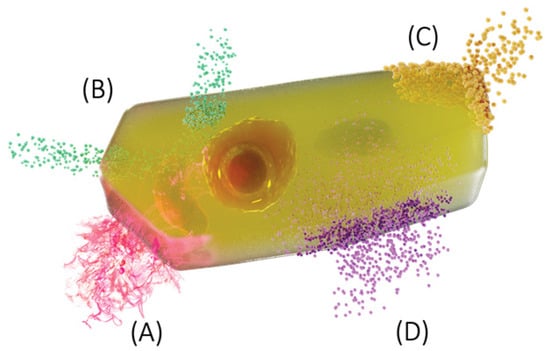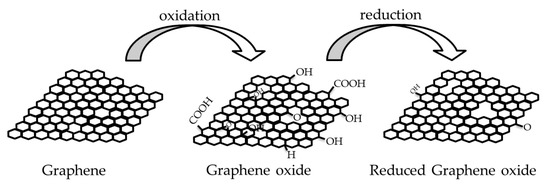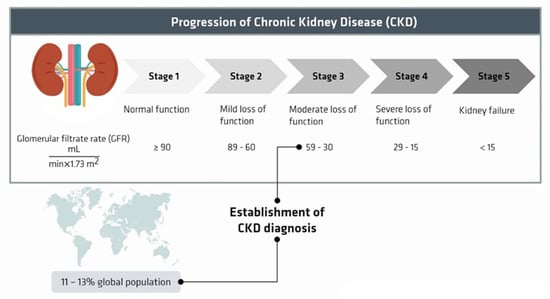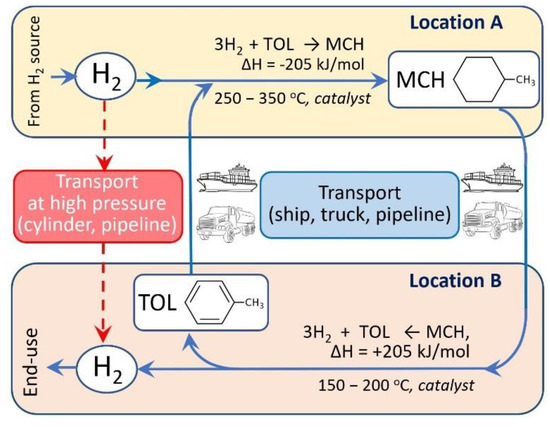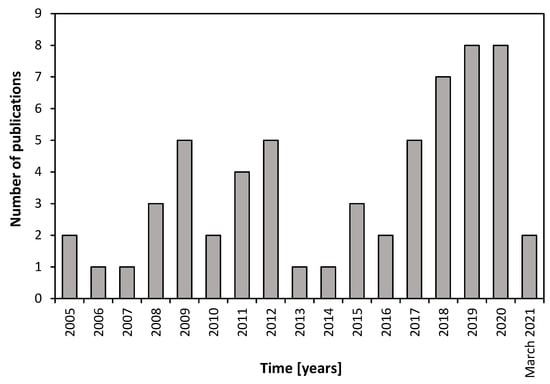Featured Reviews in Membrane Science
A topical collection in Membranes (ISSN 2077-0375).
Viewed by 56983
Share This Topical Collection
Editors
 Prof. Dr. Spas D. Kolev
Prof. Dr. Spas D. Kolev
 Prof. Dr. Spas D. Kolev
Prof. Dr. Spas D. Kolev
E-Mail
Website
Guest Editor
School of Chemistry, The University of Melbourne, Melbourne, VIC 3010, Australia
Interests: ion-exchange and liquid membranes; membrane applications in passive sampling; flow analysis; water treatment; chemical sensing; synthesis of metal nanoparticles
Special Issues, Collections and Topics in MDPI journals
 Prof. Dr. Tae-Hyun Bae
Prof. Dr. Tae-Hyun Bae
 Prof. Dr. Tae-Hyun Bae
Prof. Dr. Tae-Hyun Bae
E-Mail
Website
Guest Editor
Department of Chemical and Biomolecular Engineering, Korea Advanced Institute of Science and Technology (KAIST), Daejeon 34141, Republic of Korea
Interests: gas separation; water treatment; membrane contactor; nanoporous material; 2D material; composite membrane
Special Issues, Collections and Topics in MDPI journals
 Prof. Dr. Laurent Bazinet
Prof. Dr. Laurent Bazinet
 Prof. Dr. Laurent Bazinet
Prof. Dr. Laurent Bazinet
E-Mail
Website
Guest Editor
Department of Food Sciences, Institute of Nutrition and Functional Foods (INAF), Dairy Research Center (STELA) & Laboratory of Food Processing and Electro Membrane Processes (LTAPEM), Université Laval, Québec, QC G1V 0A6, Canada
Interests: membrane processes; electrodialytic phenomena; membrane characterization and predictive model; separation; bio-food compounds; plant proteins; bioactive peptides; dairy products; health benefits; eco-efficiency; food production lines; valorization of co-products; circular economy
Special Issues, Collections and Topics in MDPI journals
 Prof. Dr. Claus Hélix-Nielsen
Prof. Dr. Claus Hélix-Nielsen
 Prof. Dr. Claus Hélix-Nielsen
Prof. Dr. Claus Hélix-Nielsen
E-Mail
Website
Guest Editor
Department of Environmental Engineering, Technical University of Denmark, Bygningstorvet, Building 115, room 140, 2800 Kgs, Lyngby, Denmark
Interests: biomimetic membranes for biosensor and separation (filtering) applications; membrane engineering; forward osmosis
Special Issues, Collections and Topics in MDPI journals
Topical Collection Information
Dear Colleagues,
With the explosive development of a variety of new membrane technologies and dramatic improvement in the performance of existing ones, it has become imperative to try to capture this unprecedented progress in membrane science and technology. Therefore, the Editorial Board of Membranes has decided to launch a Topical Collection series which will publish high-quality review papers capturing the most important aspects of the current state-of-the art of membrane research and applications, and their future directions. We are looking forward to receiving your exciting contributions to this seminal series.
Prof. Dr. Spas D. Kolev
Prof. Dr. Tae-Hyun Bae
Prof. Laurent Bazinet
Prof. Dr. Claus Hélix-Nielsen
Guest Editors
Manuscript Submission Information
Manuscripts should be submitted online at www.mdpi.com by registering and logging in to this website. Once you are registered, click here to go to the submission form. Manuscripts can be submitted until the deadline. All submissions that pass pre-check are peer-reviewed. Accepted papers will be published continuously in the journal (as soon as accepted) and will be listed together on the collection website. Research articles, review articles as well as short communications are invited. For planned papers, a title and short abstract (about 250 words) can be sent to the Editorial Office for assessment.
Submitted manuscripts should not have been published previously, nor be under consideration for publication elsewhere (except conference proceedings papers). All manuscripts are thoroughly refereed through a single-blind peer-review process. A guide for authors and other relevant information for submission of manuscripts is available on the Instructions for Authors page. Membranes is an international peer-reviewed open access monthly journal published by MDPI.
Please visit the Instructions for Authors page before submitting a manuscript.
The Article Processing Charge (APC) for publication in this open access journal is 2200 CHF (Swiss Francs).
Submitted papers should be well formatted and use good English. Authors may use MDPI's
English editing service prior to publication or during author revisions.
Published Papers (8 papers)
Open AccessReview
Recent Advances in Polymeric Membrane Integration for Organic Solvent Mixtures Separation: Mini-Review
by
Abdellah Halloub and Wojciech Kujawski
Cited by 1 | Viewed by 1763
Abstract
Membrane technology offers considerable potential for enhancing or partially replacing conventional separation techniques, which could eventually lead to substantial energy savings. This review focuses on recent advancements in membrane separation technologies including organic solvent pervaporation (OSPV), organic solvent reverse osmosis (OSRO), organic solvent
[...] Read more.
Membrane technology offers considerable potential for enhancing or partially replacing conventional separation techniques, which could eventually lead to substantial energy savings. This review focuses on recent advancements in membrane separation technologies including organic solvent pervaporation (OSPV), organic solvent reverse osmosis (OSRO), organic solvent nanofiltration (OSN), and organic solvent ultrafiltration (OSUF) that are increasingly vital in the pharmaceutical, biochemical, and petrochemical industries. Although hybrid and inorganic membranes exhibit promising performance, polymeric membranes provide advantages in scalability and processability. The development of materials capable of operating under demanding conditions that include exposure to organic solvents, high temperatures, extreme pH levels, and oxidative environments remains critical. Here, we examine recent innovations in membrane materials and their integration into organic solvent systems. Key challenges, including material swelling, fouling, and scaling, are discussed, along with recent strategies to address these issues. Finally, we identify emerging research directions that could drive further progress in membrane technology for organic media applications.
Full article
►▼
Show Figures
Open AccessReview
DNA Transactions in Bacteria and Membranes: A Place for the Hfq Protein?
by
Sylwia Bloch, Richard R. Sinden, Frank Wien, Grzegorz Węgrzyn and Véronique Arluison
Cited by 1 | Viewed by 2417
Abstract
DNA metabolism consists of crucial processes occurring in all living cells. These processes include various transactions, such as DNA replication, genetic recombination, transposition, mutagenesis, and DNA repair. While it was initially assumed that these processes might occur in the cytoplasm of prokaryotic cells,
[...] Read more.
DNA metabolism consists of crucial processes occurring in all living cells. These processes include various transactions, such as DNA replication, genetic recombination, transposition, mutagenesis, and DNA repair. While it was initially assumed that these processes might occur in the cytoplasm of prokaryotic cells, subsequent reports indicated the importance of the cell membrane in various DNA transactions. Furthermore, newly identified factors play significant roles in regulating DNA-related cellular processes. One such factor is the Hfq protein, originally discovered as an RNA chaperone but later shown to be involved in several molecular mechanisms. These include DNA transactions and interaction with the cell membrane. Recent studies have suggested that Hfq plays a role in the regulation of DNA replication, mutagenesis, and recombination. In this narrative review, we will focus on the importance of membranes in DNA transactions and discuss the potential role of Hfq-mediated regulation of these processes in
Escherichia coli, where the protein is the best characterized. Special attention is given to the affinity of this small protein for both DNA and membranes, which might help explain some of the findings from recent experiments.
Full article
►▼
Show Figures
Open AccessEditor’s ChoiceReview
Fouling of Reverse Osmosis (RO) and Nanofiltration (NF) Membranes by Low Molecular Weight Organic Compounds (LMWOCs), Part 1: Fundamentals and Mechanism
by
Yasushi Maeda
Cited by 12 | Viewed by 12416
Abstract
Reverse osmosis (RO) and nanofiltration (NF) are ubiquitous technologies in modern water treatment, finding applications across various sectors. However, the availability of high-quality water suitable for RO/NF feed is diminishing due to droughts caused by global warming, increasing demand, and water pollution. As
[...] Read more.
Reverse osmosis (RO) and nanofiltration (NF) are ubiquitous technologies in modern water treatment, finding applications across various sectors. However, the availability of high-quality water suitable for RO/NF feed is diminishing due to droughts caused by global warming, increasing demand, and water pollution. As concerns grow over the depletion of precious freshwater resources, a global movement is gaining momentum to utilize previously overlooked or challenging water sources, collectively known as “marginal water”. Fouling is a serious concern when treating marginal water. In RO/NF, biofouling, organic and colloidal fouling, and scaling are particularly problematic. Of these, organic fouling, along with biofouling, has been considered difficult to manage. The major organic foulants studied are natural organic matter (NOM) for surface water and groundwater and effluent organic matter (EfOM) for municipal wastewater reuse. Polymeric substances such as sodium alginate, humic acid, and proteins have been used as model substances of EfOM. Fouling by low molecular weight organic compounds (LMWOCs) such as surfactants, phenolics, and plasticizers is known, but there have been few comprehensive reports. This review aims to shed light on fouling behavior by LMWOCs and its mechanism. LMWOC foulants reported so far are summarized, and the role of LMWOCs is also outlined for other polymeric membranes, e.g., UF, gas separation membranes, etc. Regarding the mechanism of fouling, it is explained that the fouling is caused by the strong interaction between LMWOC and the membrane, which causes the water permeation to be hindered by LMWOCs adsorbed on the membrane surface (surface fouling) and sorbed inside the membrane pores (internal fouling). Adsorption amounts and flow loss caused by the LMWOC fouling were well correlated with the octanol-water partition coefficient (log P). In part 2, countermeasures to solve this problem and applications using the LMWOCs will be outlined.
Full article
►▼
Show Figures
Open AccessReview
Evolution of the Concepts of Architecture and Supramolecular Dynamics of the Plasma Membrane
by
Carolina Campos Muñiz and Francisco José Fernández Perrino
Cited by 2 | Viewed by 5556
Abstract
The plasma membrane (PM) has undergone important conceptual changes during the history of scientific research, although it is undoubtedly a cellular organelle that constitutes the first defining characteristic of cellular life. Throughout history, the contributions of countless scientists have been published, each one
[...] Read more.
The plasma membrane (PM) has undergone important conceptual changes during the history of scientific research, although it is undoubtedly a cellular organelle that constitutes the first defining characteristic of cellular life. Throughout history, the contributions of countless scientists have been published, each one of them with an enriching contribution to the knowledge of the structure-location and function of each structural component of this organelle, as well as the interaction between these and other structures. The first published contributions on the plasmatic membrane were the transport through it followed by the description of the structure: lipid bilayer, associated proteins, carbohydrates bound to both macromolecules, association with the cytoskeleton and dynamics of these components.. The data obtained experimentally from each researcher were represented in graphic configurations, as a language that facilitates the understanding of cellular structures and processes. This paper presents a review of some of the concepts and models proposed about the plasma membrane, emphasizing the components, the structure, the interaction between them and the dynamics. The work is illustrated with resignified 3D diagrams to visualize the changes that occurred during the history of the study of this organelle. Schemes were redrawn in 3D from the original articles...
Full article
►▼
Show Figures
Open AccessReview
Graphene Nanocomposite Membranes: Fabrication and Water Treatment Applications
by
Gorkem Memisoglu, Raghavan Chinnambedu Murugesan, Joseba Zubia and Aleksey G. Rozhin
Cited by 36 | Viewed by 11450
Abstract
Graphene, a two-dimensional hexagonal honeycomb carbon structure, is widely used in membrane technologies thanks to its unique optical, electrical, mechanical, thermal, chemical and photoelectric properties. The light weight, mechanical strength, anti-bacterial effect, and pollution-adsorption properties of graphene membranes are valuable in water treatment
[...] Read more.
Graphene, a two-dimensional hexagonal honeycomb carbon structure, is widely used in membrane technologies thanks to its unique optical, electrical, mechanical, thermal, chemical and photoelectric properties. The light weight, mechanical strength, anti-bacterial effect, and pollution-adsorption properties of graphene membranes are valuable in water treatment studies. Incorporation of nanoparticles like carbon nanotubes (CNTs) and metal oxide into the graphene filtering nanocomposite membrane structure can provide an improved photocatalysis process in a water treatment system. With the rapid development of graphene nanocomposites and graphene nanocomposite membrane-based acoustically supported filtering systems, including CNTs and visible-light active metal oxide photocatalyst, it is necessary to develop the researches of sustainable and environmentally friendly applications that can lead to new and groundbreaking water treatment systems. In this review, characteristic properties of graphene and graphene nanocomposites are examined, various methods for the synthesis and dispersion processes of graphene, CNTs, metal oxide and polymer nanocomposites and membrane fabrication and characterization techniques are discussed in details with using literature reports and our laboratory experimental results. Recent membrane developments in water treatment applications and graphene-based membranes are reviewed, and the current challenges and future prospects of membrane technology are discussed.
Full article
►▼
Show Figures
Open AccessReview
Interaction of Human Serum Albumin with Uremic Toxins: The Need of New Strategies Aiming at Uremic Toxins Removal
by
Fahimeh Zare, Adriana Janeca, Seyyed M. Jokar, Mónica Faria and Maria Clara Gonçalves
Cited by 13 | Viewed by 4600
Abstract
Chronic kidney disease (CKD) is acknowledged worldwide to be a grave threat to public health, with the number of US end-stage kidney disease (ESKD) patients increasing steeply from 10,000 in 1973 to 703,243 in 2015. Protein-bound uremic toxins (PBUTs) are excreted by renal
[...] Read more.
Chronic kidney disease (CKD) is acknowledged worldwide to be a grave threat to public health, with the number of US end-stage kidney disease (ESKD) patients increasing steeply from 10,000 in 1973 to 703,243 in 2015. Protein-bound uremic toxins (PBUTs) are excreted by renal tubular secretion in healthy humans, but hardly removed by traditional haemodialysis (HD) in ESKD patients. The accumulation of these toxins is a major contributor to these sufferers’ morbidity and mortality. As a result, some improvements to dialytic removal have been proposed, each with their own upsides and drawbacks. Longer dialysis sessions and hemodiafiltration, though, have not performed especially well, while larger dialyzers, coupled with a higher dialysate flow, proved to have some efficiency in indoxyl sulfate (IS) clearance, but with reduced impact on patients’ quality of life. More efficient in removing PBUTs was fractionated plasma separation and adsorption, but the risk of occlusive thrombosis was worryingly high. A promising technique for the removal of PBUTs is binding competition, which holds great hopes for future HD. This short review starts by presenting the PBUTs chemistry with emphasis on the chemical interactions with the transport protein, human serum albumin (HSA). Recent membrane-based strategies targeting PBUTs removal are also presented, and their efficiency is discussed.
Full article
►▼
Show Figures
Open AccessEditor’s ChoiceReview
Recent Advances in Catalysts and Membranes for MCH Dehydrogenation: A Mini Review
by
Durga Acharya, Derrick Ng and Zongli Xie
Cited by 37 | Viewed by 7678
Abstract
Methylcyclohexane (MCH), one of the liquid organic hydrogen carriers (LOHCs), offers a convenient way to store, transport, and supply hydrogen. Some features of MCH such as its liquid state at ambient temperature and pressure, large hydrogen storage capacity, its well-known catalytic endothermic dehydrogenation
[...] Read more.
Methylcyclohexane (MCH), one of the liquid organic hydrogen carriers (LOHCs), offers a convenient way to store, transport, and supply hydrogen. Some features of MCH such as its liquid state at ambient temperature and pressure, large hydrogen storage capacity, its well-known catalytic endothermic dehydrogenation reaction and ease at which its dehydrogenated counterpart (toluene) can be hydrogenated back to MCH and make it one of the serious contenders for the development of hydrogen storage and transportation system of the future. In addition to advances on catalysts for MCH dehydrogenation and inorganic membrane for selective and efficient separation of hydrogen, there are increasing research interests on catalytic membrane reactors (CMR) that combine a catalyst and hydrogen separation membrane together in a compact system for improved efficiency because of the shift of the equilibrium dehydrogenation reaction forwarded by the continuous removal of hydrogen from the reaction mixture. Development of efficient CMRs can serve as an important step toward commercially viable hydrogen production systems. The recently demonstrated commercial MCH-TOL based hydrogen storage plant, international transportation network and compact hydrogen producing plants by Chiyoda and some other companies serves as initial successful steps toward the development of full-fledged operation of manufacturing, transportation and storage of zero carbon emission hydrogen in the future. There have been initiatives by industries in the development of compact on-board dehydrogenation plants to fuel hydrogen-powered locomotives. This review mainly focuses on recent advances in different technical aspects of catalytic dehydrogenation of MCH and some significant achievements in the commercial development of MCH-TOL based hydrogen storage, transportation and supply systems, along with the challenges and future prospects.
Full article
►▼
Show Figures
Open AccessEditor’s ChoiceReview
Aerobic Granular Sludge–Membrane BioReactor (AGS–MBR) as a Novel Configuration for Wastewater Treatment and Fouling Mitigation: A Mini-Review
by
Riccardo Campo, Claudio Lubello, Tommaso Lotti and Gaetano Di Bella
Cited by 33 | Viewed by 7962
Abstract
This mini-review reports the effect of aerobic granular sludge (AGS) on performance and membrane-fouling in combined aerobic granular sludge–membrane bioreactor (AGS–MBR) systems. Membrane-fouling represents a major drawback hampering the wider application of membrane bioreactor (MBR) technology. Fouling can be mitigated by applying aerobic
[...] Read more.
This mini-review reports the effect of aerobic granular sludge (AGS) on performance and membrane-fouling in combined aerobic granular sludge–membrane bioreactor (AGS–MBR) systems. Membrane-fouling represents a major drawback hampering the wider application of membrane bioreactor (MBR) technology. Fouling can be mitigated by applying aerobic granular sludge technology, a novel kind of biofilm technology characterized by high settleability, strong microbial structure, high resilience to toxic/recalcitrant compounds of industrial wastewater, and the possibility to simultaneously remove organic matter and nutrients. Different schemes can be foreseen for the AGS–MBR process. However, an updated literature review reveals that in the AGS–MBR process, granule breakage represents a critical problem in all configurations, which often causes an increase of pore-blocking. Therefore, to date, the objective of research in this sector has been to develop a stable AGS–MBR through multiple operational strategies, including the cultivation of AGS directly in an AGS–MBR reactor, the occurrence of an anaerobic-feast/aerobic-famine regime in continuous-flow reactors, maintenance of average granule dimensions far from critical values, and proper management of AGS scouring, which has been recently recognized as a crucial factor in membrane-fouling mitigation.
Full article
►▼
Show Figures












